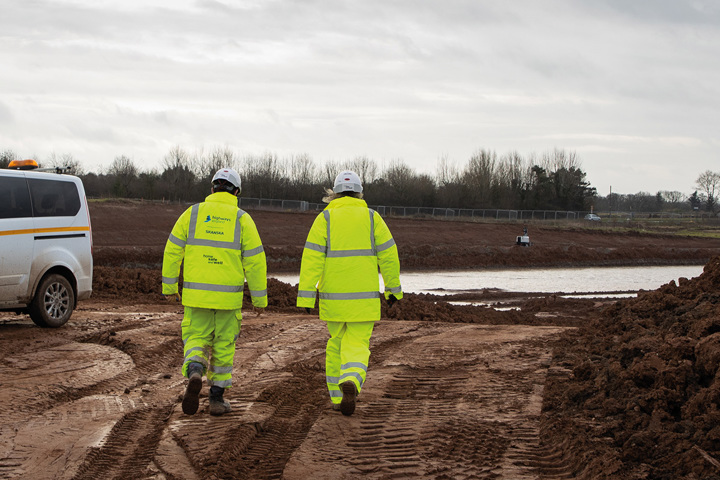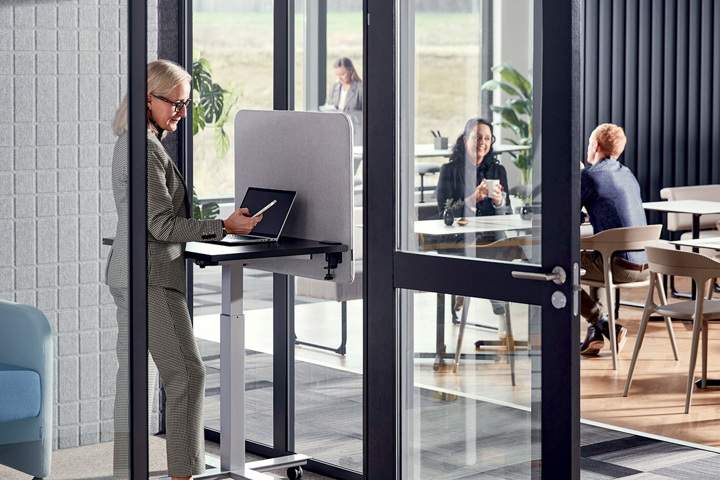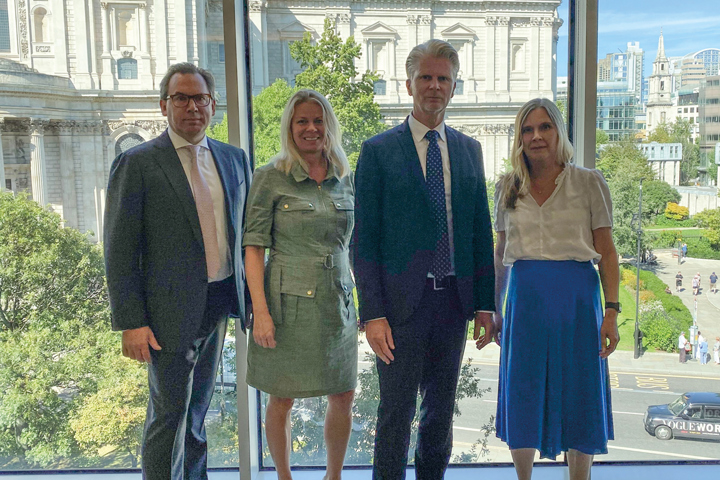
Raising the stakes in the race towards net zero
1 November 2023
The UK is driving an ambitious agenda to decarbonise all sectors of its economy by 2050, all mapped out in its Build Back Greener net zero strategy. SCC patron and construction giant Skanska UK is raising the stakes by taking on the role to lead the decarbonisation of the industry and drive the transformation across its supply chain to achieve net zero already by 2045. How is Skanska taking on this challenge? And what will it take to successfully reach the targets?
"What will it take? Too many people are under the misapprehension that it will just take one change, or one single thing, to decarbonise an entire industry, or to decarbonise the entire world, which is what we’re trying to do – but it is more complex than that,” says Adam Crossley, Director of Environment at Skanska UK.
While it might seem overwhelming to grasp the full magnitude of this undertaking, Adam distils the challenge into two main components. “We need all the actors who use carbon emitting products and services to think about more efficient ways that they can use less of them. But equally, and perhaps even more important, the organisations that produce and manufacture those carbon emitting products and services need to decarbonise the things they offer to the market.”
Finding the balance
In other words, from cement producers and steel manufacturers to companies making cars or aeroplanes, they all need to review their environmental footprint and plan for decarbonising their businesses. “For us, that means thinking about what materials we procure, but mostly, it means how we can design and deliver our work using fewer materials and in lower carbon emitting ways.”
In the end, it is about finding a balance between lowering demand and making demand more efficient, while reducing the carbon footprint of available products and services, Adam explains. “We all have a part to play in that, both as individuals and businesses, but the biggest actor is government. Government has an important part to play in terms of setting policies and investment direction.”
Major task ahead
The steel industry is the source of 7% of CO2 emissions globally, while cement, a key ingredient in concrete production, accounts for 8%. Around £60bn of global investment is now being put towards decarbonising steel and £40bn to decarbonise concrete. “Anybody that wants to throw stones at heavy industries probably don’t understand the challenges that those industries are facing. The suppliers of, for instance, steel, concrete, and cement, have an especially tough task ahead of them and the investment that is required to decarbonise those industries needs to be made.”
Supporting the supply chain
To support its suppliers and drive the transformation, Skanska seeks to procure lower carbon solutions across its supply chain and is already trialling different solutions in its projects. Ongoing efforts include a basalt reinforcement trial at the M42; procurement of lower carbon cement mixes on the HS2 project; and electric arc furnace produced steel bought for Skanska’s IPC Euston project for Network Rail. “We’re partnering with the concrete and steel suppliers to bring forward innovations, in order to send them signals that we’re willing to work with them on all of the low carbon innovations that they’re exploring,” Adam says.
Apart from encouraging its suppliers to continue exploring new low carbon options, Skanska has taken on the role of advocating and speaking on behalf of those industries. This to assure that it is clear that the cost of the transition needs to be spread amongst all stakeholders. “It’s impossible and impractical for the companies to foot the investment bill to make that decarbonisation change. The companies will have to invest some themselves, but it has to be passed on to the consumer, to us as clients, but also to governments who will need to invest in this transition.”
Skanska has made a number of public commitments to decarbonise the procurement of steel and concrete by, for example, signing up to the Climate Group’s SteelZero and ConcreteZero initiatives, pledging to go net zero by 2050. “These are industry-wide commitments with a lot of big companies signing up to them. We will actually achieve those targets five years earlier.”
Evidence-based roadmap
Rather than worrying about target dates when comparing different organisations’ commitments, Adam argues that it is better to assess how good and credible the plans are. “Our target date of 2045 is five years ahead of the government’s and it’s towards the leading edge of our industry. Some organisations in our industry have target dates earlier than us, but I’m not sure that they have practical plans to achieve those targets. Certainly, the forecasted decarbonisation rates of things like steel and cement don’t support those target dates being achieved, unless organisations are going to purchase carbon offsets early to do that.”
Adam is convinced that Skanska UK has a solid plan in place to decarbonise. “We’re based in evidence, and we’re aspirational. We’re delivering against it now in 2023 and I’m confident we’ll achieve, or beat, our 2045 target.”
Systematic approach to reaching the target
With countless initiatives to launch within the next 22 years before hitting – or indeed exceeding – the net zero target, Adam explains that the challenge needs to be broken down into smaller pieces to be more digestible. “We have a very systematic way of approaching it. We use our carbon data to identify which of the big areas we need to focus on and make an annual plan of things we think we can achieve in that year. When we get to the end of the year, we look back, take lessons learned, and make the next annual plan. So, we try not to get overwhelmed by the challenge and try not to tackle it all at once.”
Driving the agenda from all angles
There are many things that need to fall into place to deliver decarbonisation, from the right people, culture, and skills to the right systems and processes. But in order to achieve those, there are two main ingredients that need to be in place. Adam argues that it all starts with customers who in fact want to decarbonise. “We do have very aspirational customers, and I’m happy to say that despite current economic headwinds and the descope of some work in the construction market, we’re still seeing carbon reduction aspirations maintained and in some places even increased.” The other key ingredient is to have the leaders pushing for change. “When the CEO wants to drive the agenda, it will happen. I’m lucky to say that we have the key requirements to drive decarbonisation – the customers want it, we want it, and our CEO wants it. So, we are in a good place.”
Embedding the roadmap in all operations
Adam says that any company looking to prove that they are taking the climate threat seriously, needs to demonstrate that they are embedding their decarbonisation roadmap everywhere in the operations. This is why Skanska presented its roadmap to net zero at a webinar earlier this year, detailing all the steps the company is taking across the organisation to achieve its target. “If a company is talking about decarbonisation and is only showing one flagship project, you have to be led to believe that they are showing you that because they are not doing anything else. You want to be able to see evidence of decarbonisation happening right across the business and that’s what we were trying to achieve with the net zero webinar.”
Skanska’s roadmap details a whole range of issues, including how the company is decarbonising its electric vehicles, how it is trialling low carbon steel and cement, and how the team is working with design for more carbon efficient projects. “You shouldn’t have been able to leave that webinar with any doubt in your mind that we’re doing it everywhere – and we are taking it seriously. That’s the kind of evidence we want to see from any company, that they’re taking this seriously.”



Join our mailing list
and keep up-to-date with the Chamber's news and events.
Read our Privacy Policy here